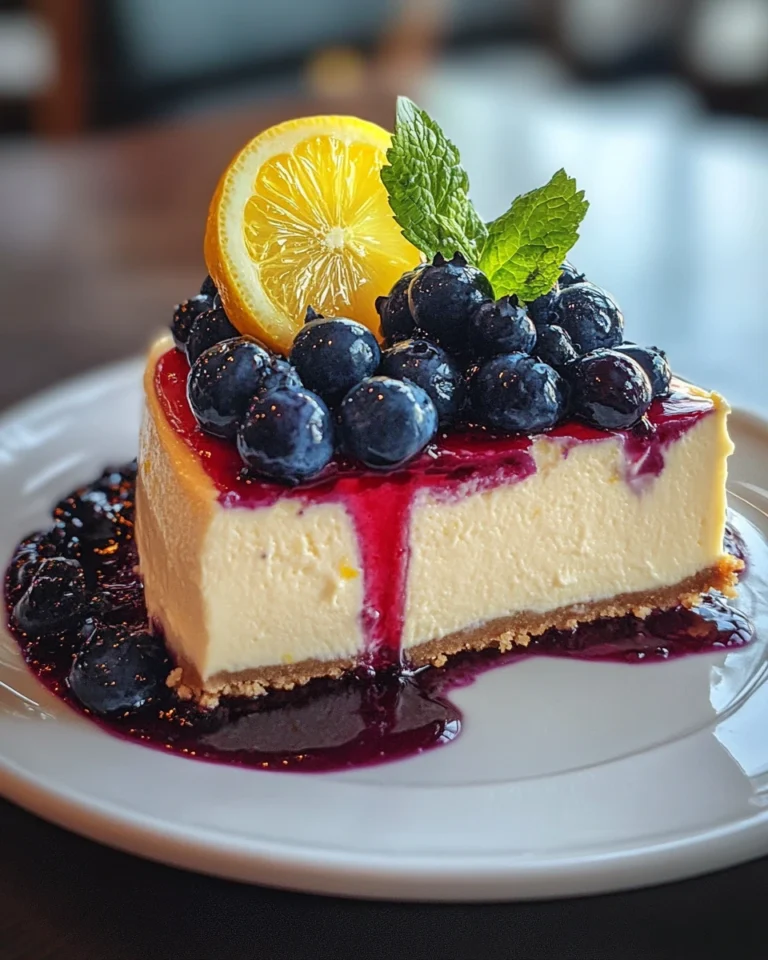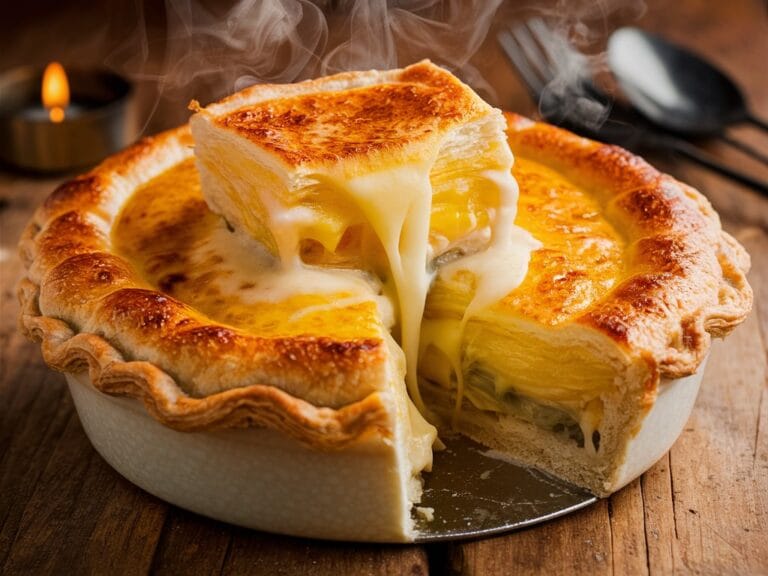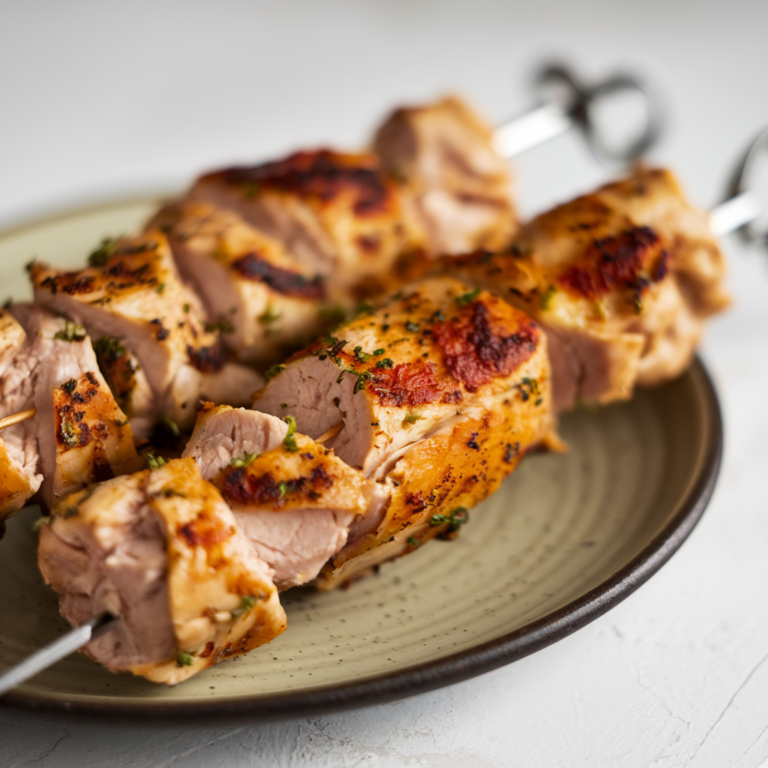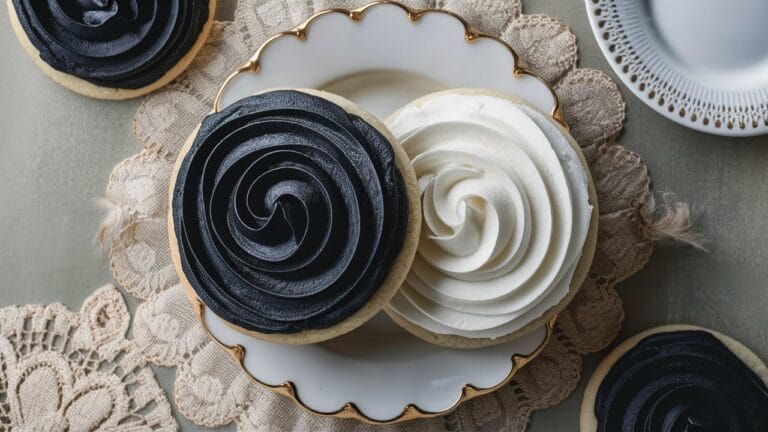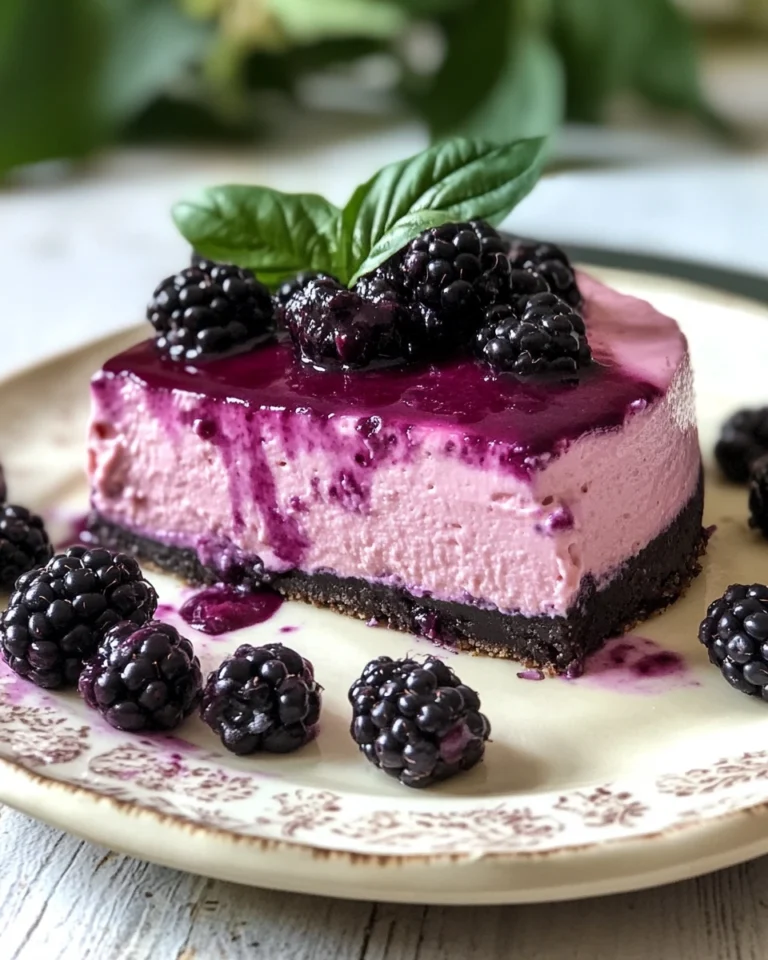Difference Between Japanese Cheesecake and Regular Cheesecake: 5 Key Facts
Table of Contents
My first bite of Japanese cheesecake changed my dessert world. It was light and airy, unlike the dense cheesecakes I knew. This experience sparked my curiosity that led me to explore more.
Today we will discover the difference between Japanese Cheesecake and Regular Cheesecake
Cheesecake has a long history, starting in ancient Greece. There, athletes used it to gain energy. Today, Japanese cheesecake offers a new twist, loved by people everywhere.
From the streets of Tokyo to bakeries in the United States, Japanese cheesecake is very popular. It shows how a classic dessert can evolve with creativity and innovation.
Key Takeaways
- Japanese cheesecake differs significantly from regular cheesecake in texture and preparation
- The dessert originated from Western influences post-World War II
- Japanese cheesecake uses whipped egg whites for a soufflé-like consistency
- Lighter and less sweet compared to traditional cream cheese desserts
- Serves as a unique culinary bridge between Eastern and Western dessert traditions
Understanding the Origins of Cheesecake Varieties
The story of cheesecake is a tasty journey through time. It started as a simple ancient treat and grew into the rich cheesecakes we love today. From Ancient Greece, cheesecake spread across the world, making dessert fans happy everywhere.
Ancient Greek Roots and Evolution
Cheesecake’s history goes back 4,000 years to Ancient Greece. Archaeologists found cheese molds on Samos that date to 2,000 B.C. These early cheesecakes were far from what we know today:
- They used simple ingredients like flour, wheat, honey, and cheese
- They were more like puddings than cakes
- They were given to athletes at the first Olympic Games in 776 B.C.
The Birth of Modern Cheesecake
The modern cheesecake started to take shape in the Middle Ages. The first English cheesecake recipe was in a 1390 cookbook. By the early 1930s, the new york-style cheesecake was born in New York City.
Japanese Adaptation Post-World War II
After World War II, American soldiers brought cream cheese to Japan. This led to the creation of Japanese cheesecake. It’s a light, soufflé-like treat that’s different from Western cheesecakes.
Japanese Cheesecake and Regular Cheesecake: Core Differences
Desserts have a lot to offer, and Japanese cheesecake stands out. It’s a game-changer that goes beyond what we expect from baked cheesecakes.
There are a few main differences:
- Texture: Japanese cheesecake is incredibly fluffy, like a cloud you can eat
- Sweetness: It’s sweeter but less sugary than American cheesecakes
- Preparation: It’s made by whipping egg whites to get a soufflé-like texture
In Vancouver, Japanese cheesecakes are getting more popular. Bakeries like Uncle Tetsu show off how to make these desserts. They bake at 300°F for 40-50 minutes.
“Japanese cheesecake is not just a dessert, it’s a culinary experience that challenges everything you know about traditional cheesecake.”
Unlike American cheesecakes, Japanese ones don’t use as much cream cheese. They use 90 grams of cream cheese, 38 grams of unsalted butter, and three egg whites whipped to perfection.
New York-style cheesecakes start at 500°F and might crack. But Japanese bakers use a water bath method. This ensures a smooth, jiggly texture that’s loved all over the world.
The Unique Texture of Japanese Cotton Soft Cheesecake
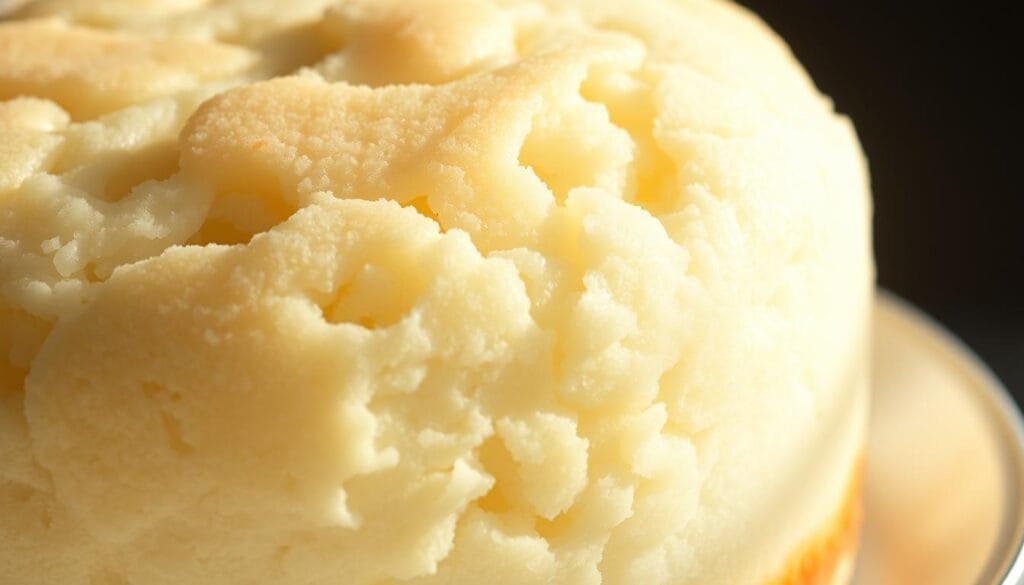
When you first see a Japanese cheesecake, you’ll notice its special texture. It’s unlike any other cheesecake. This jiggly cheesecake is famous for its light, airy look that amazes everyone.
The secret to this fluffy cheesecake is in how it’s made. Unlike thick Western cheesecakes, the Japanese version is soufflé-like. It’s so light, it almost disappears in your mouth. Bakers mix ingredients carefully to get this unique feel.
Soufflé-like Consistency Explained
Making the perfect Japanese cheesecake is a challenge. The recipe calls for:
- Carefully separating 5-6 egg whites and yolks
- Whipping egg whites to create a stable meringue
- Gently folding ingredients to keep air in
- Baking at controlled temperatures (250°F-330°F)
The Famous “Fuwa-Fuwa” Jiggle
The “fuwa-fuwa” term describes the cheesecake’s wobble. This wobble shows its very light texture. When you shake it gently, it feels like a soft cloud. This makes the dessert truly unique.
The secret to the perfect Japanese cheesecake lies in mastering the delicate balance between technique and ingredients.
Traditional New York-Style Cheesecake Characteristics

The new york-style cheesecake is a top dessert, known for its rich and dense texture. It’s a favorite among dessert lovers in the United States.
What makes a classic new york-style cheesecake special includes:
- Incredibly dense and creamy consistency
- High ratio of cream cheese to eggs
- Signature graham cracker crust
- Smooth, velvety mouthfeel
The cheesecake’s unique taste comes from its ingredients. Professional bakers use:
| Ingredient | Purpose |
|---|---|
| Cream Cheese | Provides primary texture and flavor |
| Heavy Cream | Enhances richness and smoothness |
| Eggs | Helps bind and create structure |
| Graham Cracker Crust | Adds complementary texture and flavor |
To bake this dessert, you need to be precise. It’s baked at a lower temperature to avoid cracks. This makes it silky-smooth, melting in your mouth.
“A perfect New York-style cheesecake is an art form, balancing richness, texture, and flavor.” – Culinary Experts
Learning the techniques behind this iconic dessert shows why it’s so loved across the country.
Ingredients and Preparation Methods Compared

Exploring cream cheese desserts shows the unique differences between Japanese and regular cheesecakes. Each style uses special ingredients and techniques. These make simple ingredients into amazing baked cheesecakes.
Looking into cheesecake recipes, we find two main ways to make this dessert. The ingredients greatly affect the texture and taste.
Japanese Cheesecake Base Components
Japanese cheesecake is known for its special making method. It includes:
- Cream cheese (10.6 oz)
- 6 large eggs (separated)
- Cake flour (⅔ cup)
- Heavy cream (¾ cup)
- Sugar (divided into cream cheese and meringue portions)
Regular Cheesecake Essential Elements
Traditional cheesecake has its own set of ingredients, like:
- More cream cheese
- Graham cracker crust
- Sour cream or heavy cream
- Whole eggs
- More sugar for sweetness
The preparation method makes these cheesecakes different. Japanese cheesecake uses egg whites whipped to soft peaks. This gives it a light, airy texture. Traditional cheesecake doesn’t have this.
Trying to bake these cheesecakes will be a new experience. Japanese cheesecake needs careful temperature control and a water bath. Regular cheesecake is simpler to bake. Knowing these differences can make your desserts better and impress everyone.
The Role of Temperature in Baking Both Styles
Temperature is key to making the perfect baked cheesecake. When you make Japanese cheesecake recipes, you’ll find a special way of baking. It’s different from how traditional cheesecakes are made.
Japanese cheesecake baking is more complex. It involves a special two-step temperature method:
- First, bake at 200°C (392°F) for 18 minutes.
- Then, lower the temperature to 140°C (284°F) for another 30 minutes.
- Finally, cool it slowly in the oven for 30 minutes.
On the other hand, traditional baked cheesecake is simpler. It’s baked at about 350°F for 60-70 minutes.
| Cheesecake Style | Initial Temperature | Baking Duration | Cooling Method |
|---|---|---|---|
| Japanese Cheesecake | 200°C (392°F) | 48 minutes | Gradual in-oven cooling |
| Traditional Cheesecake | 350°F | 60-70 minutes | Room temperature |
Getting the temperature just right is essential for Japanese cheesecake. It helps make a light, airy dessert that’s incredibly soft.
Knowing about these temperature details will improve your cheesecake baking. You’ll be able to make both Japanese and traditional cheesecakes with ease.
Water Bath Technique in Japanese Cheesecake Making
Mastering the water bath technique is key to making the perfect Japanese cheesecake. This method makes Japanese cheesecakes different from traditional ones. It ensures a smooth, crack-free surface and a light texture.
Purpose of the Water Bath Method
The water bath technique has several important roles in making Japanese cheesecakes:
- Maintains consistent oven humidity
- Prevents surface cracking
- Creates even heat distribution
- Ensures a moist, delicate texture
Step-by-Step Implementation
To make your Japanese cheesecake, follow these steps for the water bath:
- Wrap the cake pan with aluminum foil to prevent water seepage
- Place the cheesecake pan inside a larger, deeper baking dish
- Fill the outer pan with hot water up to ⅓ of the cake pan’s height
- Bake at 150°C (300°F) for specific time intervals
Baking Precision
The water bath technique needs careful temperature and timing control for Japanese cheesecake:
| Baking Phase | Temperature | Duration | Oven Door Status |
|---|---|---|---|
| First Phase | 150°C (300°F) | 30 minutes | Closed |
| Second Phase | 150°C (300°F) | 20 minutes | Slightly Open |
| Final Phase | 150°C (300°F) | 20 minutes | Closed |
By mastering the water bath technique, you’ll make your Japanese cheesecake truly special. It will have that signature cotton-soft texture everyone loves.
Serving Temperature and Storage Guidelines
Knowing how to serve and store your cheesecakes can make a big difference. Japanese cheesecake and regular cheesecake have their own special ways to be enjoyed.
Japanese cheesecake is best when it’s at room temperature or a bit warm. This brings out its soft and fluffy texture. On the other hand, regular cheesecake is perfect when it’s chilled. This keeps its creamy and dense feel just right.
Storage Recommendations
- Japanese cheesecake: Store in an airtight container
- Regular cheesecake: Refrigerate immediately after serving
- Maximum refrigeration time: 3-5 days for both varieties
Here are some important tips for storing your cheesecakes:
| Cheesecake Type | Storage Temperature | Maximum Storage Time |
|---|---|---|
| Japanese Cheesecake | 40°F (4°C) | 3-4 days |
| Regular Cheesecake | 40°F (4°C) | 4-5 days |
Pro tip: You can also freeze both Japanese and regular cheesecakes for up to 2 months. Just wrap them well in plastic wrap and put them in a freezer-safe container.
Before you serve, let your cheesecake sit at room temperature for about an hour. This will make it taste even better. Whether you’re having Japanese or regular cheesecake, these tips will help keep it delicious.
Cultural Impact on Taste Preferences
The Japanese cheesecake is a bridge between cultures in the world of cream cheese desserts. It shows how bakers in Japan change classic recipes with care. Their cheesecakes are known for being less sweet than those in the West.
Cultural differences greatly affect how we enjoy desserts. In Japan, baking is all about balance and simplicity. This is seen in their cheesecakes, which are lighter and less sweet than the dense, rich ones from the West.
Japanese cheesecake shows how global food sharing changes old recipes. After World War II, American soldiers brought new baking ideas to Japan. Japanese bakers then made their own version, blending foreign techniques with their own touch. This has made Japanese cheesecake loved around the world.
Knowing about these cultural differences helps us see the beauty in different desserts. The Japanese cheesecake is more than a treat; it’s a sign of creativity and new ideas in food. Whether you like the bold New York-style or the soft Japanese one, each has its own story of taste and tradition.
FAQ
What is the main difference between Japanese and regular cheesecake?
Japanese cheesecake is light and airy, like a soufflé. Regular New York-style cheesecake is dense and creamy. Japanese cheesecake has a unique jiggly texture.
How did Japanese cheesecake originate?
It started after World War II, influenced by Western baking. It’s a mix of American-style cheesecake and Japanese tastes for lighter desserts.
Why is Japanese cheesecake so fluffy?
It’s fluffy because of meringue and special baking. Egg whites are folded into the cream cheese, making it light. The baking method and temperature also add to its softness.
What makes New York-style cheesecake different?
It’s rich and dense, with lots of cream cheese. It has a graham cracker crust. It’s baked hot, giving it a creamy taste.
How should I serve Japanese cheesecake?
Serve it warm or at room temperature. This brings out its soft texture. Unlike regular cheesecake, it’s best enjoyed when slightly warm.
Can I make Japanese cheesecake at home?
Yes, but it needs precision. Use a water bath, separate egg whites, and bake at a low temperature. It’s a bit tricky but doable with practice.
What are the primary ingredients in Japanese vs. regular cheesecake?
Japanese cheesecake has cream cheese, eggs, and sugar, plus whipped egg whites. Regular cheesecake has more cream cheese and whole eggs, making it denser.
Is Japanese cheesecake less sweet than regular cheesecake?
Yes, it usually is. Japanese cheesecake is known for its subtle flavors and less sweetness. New York-style cheesecake is sweeter, following Western dessert traditions.


